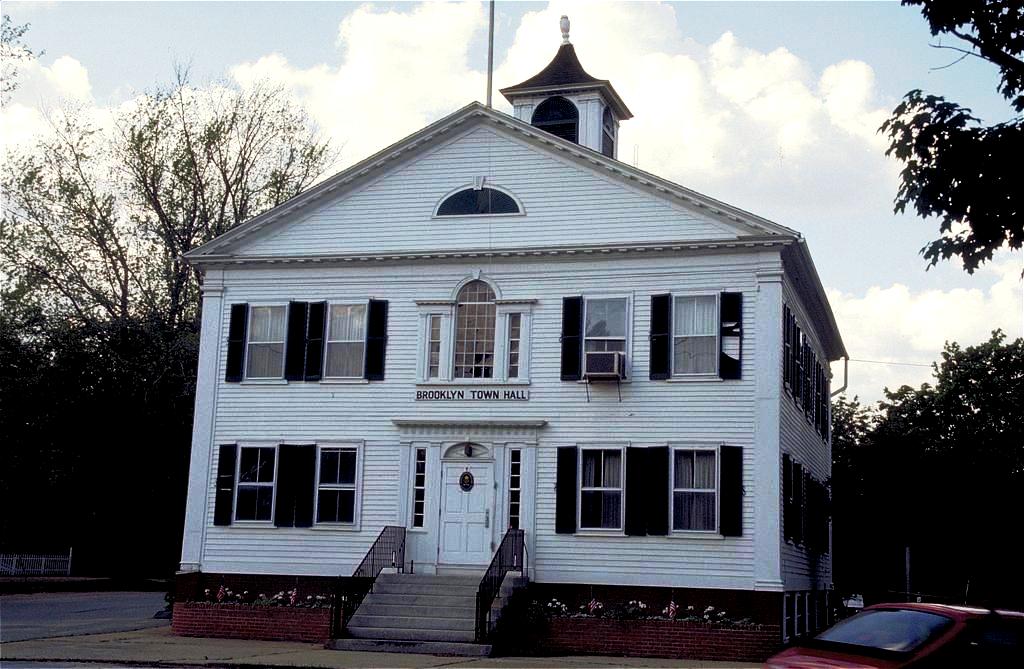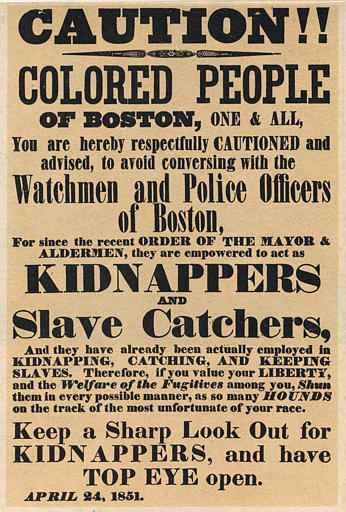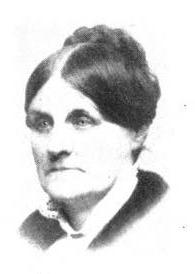|
Thomas Treadwell Stone
Thomas Treadwell Stone (February 9, 1801 – November, 1895) was an American Unitarian pastor, abolitionist, and Transcendentalist. Life and work Thomas Treadwell Stone was born on February 9, 1801, in Waterford, Maine to Solomon Stone and Hepzibah Treadwell Stone. His maternal grandfather, Thomas Treadwell, served with the Minutemen and was at the battle of Bunker Hill with Colonel William Prescott's regiment. At that time Waterford was an area of new and sparsely populated farmland, and Solomon Stone made his living as a farmer. Thomas attended Bridgton Academy and graduated from Bowdoin College in 1820. Early career and marriage Thomas married Laura Elizabeth Poor in January 1825 in Andover, Maine. Laura's brother Henry Varnum Poor was a financial analyst and founder of H.V. and H.W. Poor Co., which later evolved into the financial research and analysis bellwether, Standard & Poor's. Thomas and Laura's marriage produced 7 sons (Thomas, Walter, Henry, Lincoln, Alfred, ... [...More Info...] [...Related Items...] OR: [Wikipedia] [Google] [Baidu] |
:Template:Infobox Writer/doc
Infobox writer may be used to summarize information about a person who is a writer/author (includes screenwriters). If the writer-specific fields here are not needed, consider using the more general ; other infoboxes there can be found in :People and person infobox templates. This template may also be used as a module (or sub-template) of ; see WikiProject Infoboxes/embed for guidance on such usage. Syntax The infobox may be added by pasting the template as shown below into an article. All fields are optional. Any unused parameter names can be left blank or omitted. Parameters Please remove any parameters from an article's infobox that are unlikely to be used. All parameters are optional. Unless otherwise specified, if a parameter has multiple values, they should be comma-separated using the template: : which produces: : , language= If any of the individual values contain commas already, add to use semi-colons as separators: : which produces: : , ps ... [...More Info...] [...Related Items...] OR: [Wikipedia] [Google] [Baidu] |
Yale Divinity School
Yale Divinity School (YDS) is one of the twelve graduate and professional schools of Yale University in New Haven, Connecticut. Congregationalist theological education was the motivation at the founding of Yale, and the professional school has its roots in a Theological Department established in 1822. The school had maintained its own campus, faculty, and degree program since 1869, and it has become more ecumenical beginning in the mid-19th century. Since the 1970s, it has been affiliated with the Episcopal Berkeley Divinity School and has housed the Institute of Sacred Music, which offers separate degree programs. In July 2017, a two-year process of formal affiliation was completed, with the addition of Andover Newton Seminary joining the school. Over 40 different denominations are represented at YDS. History Theological education was the earliest academic purpose of Yale University. When Yale College was founded in 1701, it was as a college of religious training for Congr ... [...More Info...] [...Related Items...] OR: [Wikipedia] [Google] [Baidu] |
Brooklyn, Connecticut
Brooklyn is a town in Windham County, Connecticut, United States. The population was 8,450 at the 2020 census. The town center village is listed by the U.S. Census Bureau as a census-designated place. The district of East Brooklyn is listed as a separate census-designated place. Geography According to the United States Census Bureau, the town has a total area of , of which, of it is land and of it (0.58%) is water. History Brooklyn was settled in the late 17th century and incorporated as its own town in 1786. It is named for the Quinebaug River, or Brook Line, which forms its eastern boundary. Brooklyn was originally land of the Wabaquasset. It was incorporated as a town separate from Canterbury and Pomfret in May 1786. It is home to the Brooklyn Fair, America's oldest continuously operating agricultural fair, as well as the Brooklyn Correctional Institution, a state-run medium security prison. Brooklyn held the 1833 trial of Prudence Crandall, a schoolteacher charged ... [...More Info...] [...Related Items...] OR: [Wikipedia] [Google] [Baidu] |
Transcendental Club
The Transcendental Club was a group of New England authors, philosophers, socialists, politicians and intellectuals of the early-to-mid-19th century which gave rise to Transcendentalism. Overview Frederic Henry Hedge, Ralph Waldo Emerson, George Ripley, and George Putnam (1807–1878; the Unitarian minister in Roxbury) met in Cambridge, Massachusetts on September 8, 1836, to discuss the formation of a new club; their first official meeting was held eleven days later at Ripley's house in Boston.Packer, Barbara L. ''The Transcendentalists''. Athens, Georgia: The University of Georgia Press, 2007: 47. Other members of the club included Amos Bronson Alcott, Orestes Brownson, Theodore Parker, Henry David Thoreau, William Henry Channing, James Freeman Clarke, Christopher Pearse Cranch, Convers Francis, Sylvester Judd, and Jones Very. Female members included Sophia Ripley, Margaret Fuller, Elizabeth Peabody, Ellen Sturgis Hooper, and Caroline Sturgis Tappan. Originally, the group we ... [...More Info...] [...Related Items...] OR: [Wikipedia] [Google] [Baidu] |
Fugitive Slave Act Of 1850
The Fugitive Slave Act or Fugitive Slave Law was passed by the United States Congress on September 18, 1850, as part of the Compromise of 1850 between Southern interests in slavery and Northern Free-Soilers. The Act was one of the most controversial elements of the 1850 compromise and heightened Northern fears of a slave power conspiracy. It required that all escaped slaves, upon capture, be returned to the slaver and that officials and citizens of free states had to cooperate. Abolitionists nicknamed it the "Bloodhound Bill", after the dogs that were used to track down people fleeing from slavery. The Act contributed to the growing polarization of the country over the issue of slavery, and was one of the factors that led to the Civil War. Background By 1843, several hundred enslaved people a year escaped to the North successfully, making slavery an unstable institution in the border states. The earlier Fugitive Slave Act of 1793 was a Federal law that was written w ... [...More Info...] [...Related Items...] OR: [Wikipedia] [Google] [Baidu] |
Wendell Phillips
Wendell Phillips (November 29, 1811 – February 2, 1884) was an American abolitionist, advocate for Native Americans, orator, and attorney. According to George Lewis Ruffin, a Black attorney, Phillips was seen by many Blacks as "the one white American wholly color-blind and free from race prejudice". According to another Black attorney, Archibald Grimké, as an abolitionist leader he is ahead of William Lloyd Garrison and Charles Sumner. From 1850 to 1865 he was the "preëminent figure" in American abolitionism. Early life and education Phillips was born in Boston, Massachusetts, on November 29, 1811, to Sarah Walley and John Phillips, a wealthy lawyer, politician, and philanthropist, who was the first mayor of Boston."A Famous Career," ''Reading [...More Info...] [...Related Items...] OR: [Wikipedia] [Google] [Baidu] |
William Lloyd Garrison
William Lloyd Garrison (December , 1805 – May 24, 1879) was a prominent American Christian, abolitionist, journalist, suffragist, and social reformer. He is best known for his widely read antislavery newspaper '' The Liberator'', which he founded in 1831 and published in Boston until slavery in the United States was abolished by constitutional amendment in 1865. Garrison promoted "no-governmentism" and rejected the inherent validity of the American government on the basis that its engagement in war, imperialism, and slavery made it corrupt and tyrannical. He initially opposed violence as a principle and advocated for Christian nonresistance against evil; at the outbreak of the Civil War, he abandoned his previous principles and embraced the armed struggle and the Lincoln administration. He was one of the founders of the American Anti-Slavery Society and promoted immediate and uncompensated, as opposed to gradual and compensated, emancipation of slaves in the United States. ... [...More Info...] [...Related Items...] OR: [Wikipedia] [Google] [Baidu] |
John Greenleaf Whittier
John Greenleaf Whittier (December 17, 1807 – September 7, 1892) was an American Quaker poet and advocate of the abolition of slavery in the United States. Frequently listed as one of the fireside poets, he was influenced by the Scottish poet Robert Burns. Whittier is remembered particularly for his anti-slavery writings, as well as his 1866 book ''Snow-Bound''. Biography Early life and work John Greenleaf Whittier was born to John and Abigail ( Hussey) Whittier at their rural homestead in Haverhill, Massachusetts, on December 17, 1807. His middle name is thought to mean ''feuillevert'', after his Huguenot forebears. He grew up on the farm in a household with his parents, a brother and two sisters, a maternal aunt and paternal uncle, and a constant flow of visitors and hired hands for the farm. As a boy, it was discovered that Whittier was color-blind when he was unable to see a difference between ripe and unripe strawberries. The farm was not very profitable, and there was ... [...More Info...] [...Related Items...] OR: [Wikipedia] [Google] [Baidu] |
Ralph Waldo Emerson
Ralph Waldo Emerson (May 25, 1803April 27, 1882), who went by his middle name Waldo, was an American essayist, lecturer, philosopher, abolitionist, and poet who led the transcendentalist movement of the mid-19th century. He was seen as a champion of individualism and a prescient critic of the countervailing pressures of society, and his ideology was disseminated through dozens of published essays and more than 1,500 public lectures across the United States. Emerson gradually moved away from the religious and social beliefs of his contemporaries, formulating and expressing the philosophy of transcendentalism in his 1836 essay "Nature". Following this work, he gave a speech entitled "The American Scholar" in 1837, which Oliver Wendell Holmes Sr. considered to be America's "intellectual Declaration of Independence."Richardson, p. 263. Emerson wrote most of his important essays as lectures first and then revised them for print. His first two collections of essays, '' Essays: Firs ... [...More Info...] [...Related Items...] OR: [Wikipedia] [Google] [Baidu] |
Amos Bronson Alcott
Amos Bronson Alcott (; November 29, 1799 – March 4, 1888) was an American teacher, writer, philosopher, and reformer. As an educator, Alcott pioneered new ways of interacting with young students, focusing on a conversational style, and avoided traditional punishment. He hoped to perfect the human spirit and, to that end, advocated a plant-based diet. He was also an abolitionist and an advocate for women's rights. Born in Wolcott, Connecticut in 1799, Alcott had only minimal formal schooling before attempting a career as a traveling salesman. Worried that the itinerant life might have a negative impact on his soul, he turned to teaching. His innovative methods, however, were controversial, and he rarely stayed in one place very long. His most well-known teaching position was at the Temple School in Boston. His experience there was turned into two books: ''Records of a School'' and ''Conversations with Children on the Gospels''. Alcott became friends with Ralph Waldo Emers ... [...More Info...] [...Related Items...] OR: [Wikipedia] [Google] [Baidu] |
Isaac Knapp
Isaac Knapp (January 11, 1804 – September 14, 1843) was an American abolitionist printer, publisher, and bookseller in Boston, Massachusetts. He is remembered primarily for his collaboration with William Lloyd Garrison in printing and publishing ''The Liberator'' newspaper. Biography Knapp was born in Newburyport, Massachusetts, to Philip Coombs Knapp and Abigail Remmick; siblings included Abigail Knapp. In 1825 he was proprietor of the '' Essex Courant'' newspaper, published there. With his friend William Lloyd Garrison he printed the anti-slavery '' Liberator'' newspaper, from 1831 to 1839. He also co-founded the New England Anti-Slavery Society. His printing office was located on Congress Street (circa 1831) and then on Cornhill. In 1837, the address of the Boston office of the American Anti-Slavery Society was Knapp's address. (See sidebar.) In later years of the 1830s he ceased printing books, used other printers, and turned his printing office into a bookstore. He ... [...More Info...] [...Related Items...] OR: [Wikipedia] [Google] [Baidu] |
Elijah Lovejoy
Elijah Parish Lovejoy (November 9, 1802 – November 7, 1837) was an American Presbyterian minister, journalist, newspaper editor, and abolitionist. Following his murder by a mob, he became a martyr to the abolitionist cause opposing slavery in the United States. He was also hailed as a defender of free speech and freedom of the press. Lovejoy was born in New England and graduated from what is today Colby College. Unsatisfied with a teaching career, he was drawn to journalism and decided to 'go west'. In 1827, he reached St. Louis, Missouri. Due to the Missouri Compromise of 1820, Missouri had entered the United States as a slave state. Lovejoy edited a newspaper but returned east for a time to study for the ministry at Princeton University. On his return to St. Louis, he founded the ''St. Louis Observer'', in which he became increasingly more critical of slavery and the powerful interests protecting slavery. Facing threats and violent attacks, Lovejoy decided to move a ... [...More Info...] [...Related Items...] OR: [Wikipedia] [Google] [Baidu] |




.jpg)





